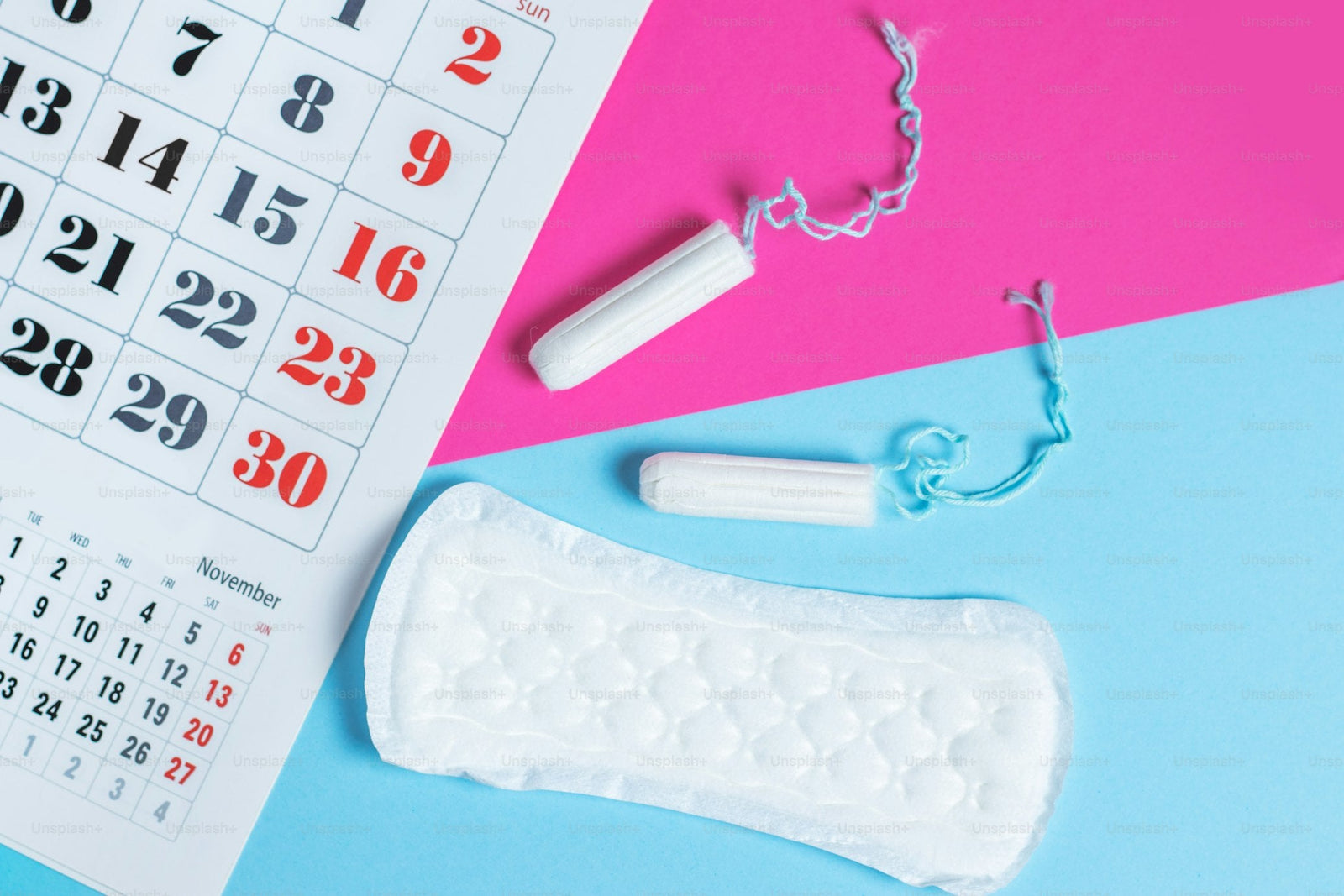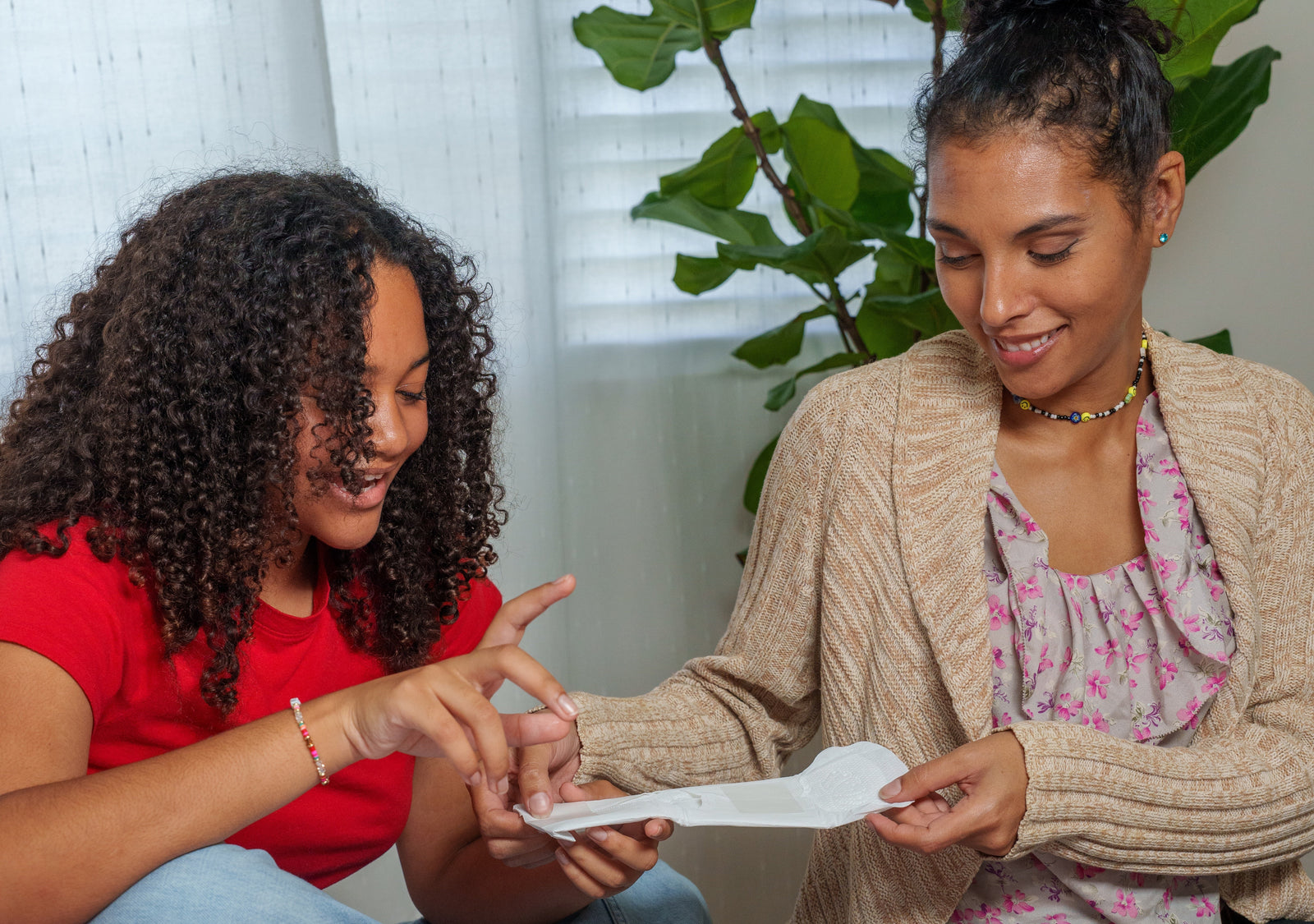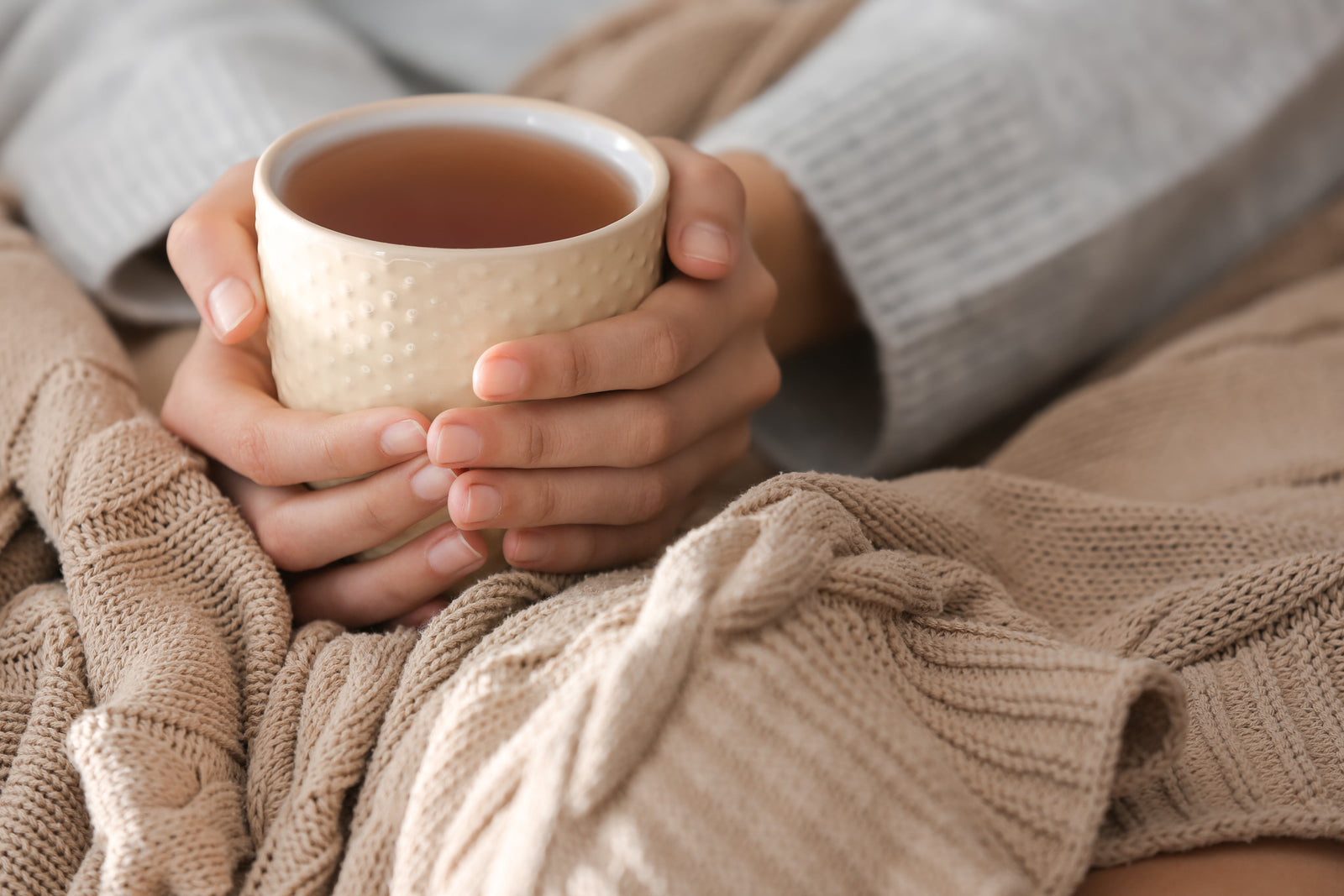
by Sterling Jones – October 13, 2025
How to Talk to Your Best Friend About Periods
Picture this: You’re at a sleepover when your friend suddenly goes quiet and looks uncomfortable. Or you’re at school and notice your best friend has a stain on her pants. Or maybe you just got your first period and you’re dying to talk to someone who gets it, but you’re not sure how to bring it up. These moments happen all the time, but somehow periods remain one of those topics that even best friends struggle to discuss openly. At Scarlet by RedDrop, we believe that normalizing period conversations with friends creates supportive communities where no one has to navigate menstruation alone. Your friends are going through the same experiences, feeling the same worries, and dealing with the same challenges. When you can talk openly about periods, you transform something potentially isolating into something you face together. Why Period Talk with Friends Matters You’re Not Alone in This Roughly half the population experiences periods, which means most of your female friends are either menstruating now or will be soon. Yet so many people feel isolated in their period experiences because no one talks about it openly. Breaking that silence with your friends creates connection and support that makes everything easier. When you can text your best friend “cramps are killing me today” and get back understanding and sympathy rather than awkward silence, periods become less scary and more manageable. When you know your friend group has emergency supplies for each other, school days feel less stressful. Friends Get It in Ways Adults Sometimes Don’t Parents, teachers, and other adults can be wonderfully supportive, but they’re not experiencing the specific challenges of managing periods as a teen in today’s world. Your friends understand what it’s like to worry about leaking during a presentation, to feel exhausted during volleyball practice, or to navigate period care with limited bathroom breaks between classes. Friends provide peer support that complements adult guidance. They’re living the same reality you are, which creates a different kind of understanding and solidarity. Building Lifelong Communication Skills Learning to talk openly about periods with friends builds communication skills you’ll use throughout your life. If you can navigate potentially awkward conversations about menstruation, you can handle difficult conversations about all kinds of topics. Period talk teaches vulnerability, empathy, and the courage to discuss things that matter even when they feel uncomfortable. How to Start Period Conversations Finding Natural Openings You don’t need to make a big announcement or have a formal “period talk” with your friends. Natural opportunities for period conversations happen all the time. Someone mentions not feeling well. Someone asks if anyone has a pad. Someone makes a joke about craving chocolate. These everyday moments create openings for more genuine conversations. Start small and casual. “Ugh, I’m so tired today. My period just started and I didn’t sleep well.” This simple statement normalizes period talk without making it a big deal. Your friend might respond with sympathy, share their own experience, or ask questions. Whatever their response, you’ve opened the door. Using Humor to Ease Tension Humor can be a great tool for starting period conversations, as long as it’s friendly humor that doesn’t mock or shame. Joking about period cravings, complaining dramatically about cramps, or making light observations about period brain fog can all introduce the topic in ways that feel less serious and intimidating. The key is humor that invites connection rather than creating distance. “My uterus is staging a rebellion today” lands differently than jokes that treat periods as disgusting or shameful. Choose humor that acknowledges periods as normal experiences that can be frustrating or funny without being gross. Testing the Waters If you’re not sure how a friend will respond to period talk, test the waters with small mentions before diving into detailed conversations. Mention that you’re on your period casually and see how they react. If they seem comfortable and engaged, you know it’s safe to share more. If they seem uncomfortable, you can respect that boundary while keeping the door open for future conversations. Not everyone is ready to talk openly about periods at the same time, and that’s okay. Your comfort with the topic might help friends become more comfortable over time, but you can’t force readiness that isn’t there yet. Supporting a Friend’s First Period If Your Friend Comes to You First Being the person your friend turns to when they get their first period is a huge honor. It means they trust you with something important and vulnerable. How you respond in this moment can shape how they feel about periods going forward. Stay calm and positive, even if you feel a little nervous yourself. Reassure them that getting their period is completely normal and healthy. If you’ve already started your period, share briefly what it’s like for you to help them feel less alone. If you haven’t started yours yet, you can still be supportive and helpful. Practical help matters as much as emotional support. Do they need supplies? Can you help them figure out what to do next? Should you help them tell a parent or school nurse? Sometimes the most supportive thing you can do is simply sit with them while they process this big change. What to Say (and What Not to Say) Helpful responses to a friend’s first period include: “This is totally normal, and you’re going to be okay.” “What do you need right now? How can I help?” “Do you want to talk about it or do you want a distraction?” “I’m here for you no matter what.” Avoid responses like: “Welcome to womanhood!” (This can feel like pressure to act differently) “It’s not that bad” (This dismisses their feelings) “Now you have to deal with this forever” (This makes it sound awful) Oversharing your own dramatic period stories (They need support, not horror stories) Practical First Period Support If your friend gets their first period at school or when you’re together, practical support means everything. Help them get to a bathroom privately. Find supplies from your bag, the school nurse, or by asking another trusted person. Help them figure out how to use products if they’re uncertain. If there’s a stain, help them handle it discreetly. Offer your jacket to tie around their waist. Help them strategize about getting home or getting clean clothes. Make them feel supported rather than embarrassed. Being There for Period Emergencies The Stain Situation If you notice your friend has a period stain they haven’t noticed yet, tell them quietly and privately. Pull them aside and let them know gently. Don’t announce it publicly or make a big deal of it. Just quietly say, “Hey, I think you might want to check your pants. Do you need my jacket?” Most people feel grateful when friends discreetly alert them to stains rather than letting them walk around unaware. It’s an act of kindness that shows you’ve got their back. The Supply Emergency Always carry extra period supplies if you can, even on days when you’re not on your period. Being the friend who can provide emergency pads or tampons makes you a hero in period crisis moments. If a friend asks for supplies, provide them without making them feel like they’re imposing. “Of course, here you go!” is so much better than “Again? You really need to carry your own supplies.” Everyone forgets sometimes or gets caught off guard by early periods. The Comfort Crisis Sometimes the emergency isn’t supplies but comfort. Your friend is cramping badly, feeling nauseous, or just having a rough period day. Support looks like understanding if they need to cancel plans, being patient if they’re more emotional than usual, or simply sitting with them while they feel crappy. Ask what they need rather than assuming. Some people want distraction during bad period days, others want to complain and be validated. Some want company, others need space. The best support is responsive to their actual needs. Creating Period-Positive Friend Groups Normalizing Period Talk The more you and your friends talk openly about periods, the more normal and comfortable it becomes for everyone. Share when you’re on your period. Mention period symptoms matter-of-factly. Ask how friends are feeling during their periods. Treat periods as normal parts of life worth acknowledging and supporting. When period talk becomes normal in your friend group, new friends quickly learn that this is a safe space to discuss menstruation. You create a culture where people don’t have to hide periods or pretend they’re not happening. Building a Supply Network Encourage your friend group to keep emergency supplies in multiple locations. Someone keeps extra pads in their locker, someone keeps them in their gym bag, someone has supplies in their car. When everyone contributes, no one has to worry about being caught without supplies. Some friend groups even create shared emergency kits that live in a trusted person’s locker or bag. This ensures that anyone in the group can access supplies when needed. Sharing Comfort Strategies Friends teach each other what works for period comfort. One friend discovers that ginger tea helps with nausea and shares that knowledge. Another friend learns about heating pads and introduces the group to that relief. Someone figures out the best underwear for period protection and everyone benefits from that information. This sharing of knowledge and strategies makes everyone’s period experiences easier. You’re not all figuring things out alone. You’re pooling collective wisdom and helping each other. Navigating Different Comfort Levels When Friends Aren’t Ready to Talk Not everyone is comfortable discussing periods openly, and that’s okay. Some friends come from families or cultures where periods aren’t discussed. Some feel more private about their bodies. Some just aren’t ready yet. If a friend seems uncomfortable with period talk, respect that boundary without judgment. You can still be supportive in ways they’re comfortable with. Maybe they’re not ready to discuss details, but would appreciate you discreetly providing supplies when needed. Maybe they need time before they’re ready for open conversations. Keep demonstrating that you’re a safe person to talk to about periods without pushing. Sometimes people need to see that you handle the topic comfortably and respectfully before they’re ready to engage themselves. Respecting Privacy Preferences Some friends are happy to discuss periods in group settings, others prefer one-on-one conversations. Some are comfortable with detailed discussions, others prefer keeping things general. Pay attention to these preferences and respect them. Don’t share a friend’s period information with others without permission. If a friend tells you they got their first period or they’re dealing with difficult symptoms, that’s private information unless they indicate you can share it. Respecting privacy builds trust that encourages more open communication. Finding Your People If your current friend group isn’t comfortable with period talk, that doesn’t mean you’re wrong to want those conversations. You might need to find friends who share your comfort level with discussing bodies and health. Having even one friend you can talk openly with about periods makes a huge difference. That one person can provide the support and normalcy you need, even if your wider friend circle isn’t there yet. Period Talk During Sleepovers and Hangouts Managing Periods at Sleepovers Getting your period during a sleepover can feel stressful, but friends who understand make it no big deal. If you’re hosting a friend who gets their period, make sure they know where supplies are located and that they can help themselves to anything they need. If you get your period at a friend’s house, it’s okay to ask for what you need. Most friends are happy to help with supplies, pain relief, or comfort items. Don’t suffer in silence because you’re embarrassed to mention it. Pool and Beach Days Period-related anxiety about swimming with friends is real. Having friends you can talk to about period concerns around water activities helps you figure out solutions together. Whether you’re using tampons, menstrual cups, or Scarlet by RedDrop’s period swimwear, knowing your friends understand your period situation makes swimming activities less stressful. Some friends might choose to skip swimming during periods, and that’s fine too. What matters is being able to make decisions that work for you without feeling judged. Period Snack Runs One of the best things friends can do for each other is understanding period cravings and be willing to make snack runs or share comfort foods. Friends who say, “Let’s get ice cream, you look like you need it” without you having to explain that your period is making you crave chocolate are truly wonderful friends. Supporting Friends with Difficult Periods When Periods Are More Than Uncomfortable Some friends experience severe period symptoms that significantly impact their lives. Heavy bleeding, intense pain, or debilitating mood changes aren’t just “part of being a girl.” They are signs that something might need medical attention. Be a supportive friend by taking their experiences seriously. Don’t tell them they’re overreacting or being dramatic. Instead, encourage them to talk to parents or healthcare providers about what they’re experiencing. Sometimes friends are the first to recognize that period symptoms seem more severe than typical. Mental Health and Periods Period-related mood changes are normal, but some friends experience more significant mental health impacts during their cycles. Be aware of friends who seem to struggle emotionally around their periods. Ask how they’re doing. Encourage them to seek support if needed. Just being present and understanding helps more than you might realize. Knowing When to Get Adult Help If a friend shares period experiences that sound concerning, it’s okay to encourage adult involvement. Severe pain, extremely heavy bleeding, or mental health concerns during periods all deserve professional attention. You’re not betraying your friend by suggesting they need more support than you can provide. Building Period Confidence Together Sharing Wins and Challenges Celebrate period-related victories with your friends. Successfully managing your period during a big event, finding a product that works perfectly, or handling a period emergency well all deserve acknowledgment. Sharing these wins makes periods feel less like something to endure and more like something you’re successfully navigating. Similarly, sharing challenges normalizes the fact that periods are sometimes difficult. When friends talk honestly about rough period days, everyone feels less alone in their struggles. Learning and Growing Together Your period experiences will change as you grow, and having friends to navigate these changes with makes everything easier. You’re all learning how your bodies work, what strategies help, and how to advocate for your needs. Doing that learning together creates bonds that last beyond your teen years. Creating Lasting Friendships Through Support Friendships built on genuine support through vulnerable experiences like periods tend to be deeper and more lasting. When you know your friends have your back during something as personal as period emergencies, you know they’re truly good friends. The support you give and receive during periods teaches you how to be there for friends through all kinds of challenges. These skills transfer to every aspect of friendship and create relationships built on trust, empathy, and genuine care. Final Thoughts on Period Friendship Your friends are navigating the same period journey you are, often feeling the same worries and facing the same challenges. When you break the silence and start talking openly about periods, you create communities where no one has to struggle alone. At Scarlet by RedDrop, we believe that period-positive friendships make everything about menstruation easier and better. Friends who can discuss periods openly, support each other through emergencies, share wisdom and strategies, and simply acknowledge that periods are normal parts of life create the kind of supportive environments where everyone thrives. You don’t have to be perfect at period conversations. You just have to be willing to try, to be there for your friends, and to normalize something that half the population experiences. Start small, be kind, respect boundaries, and watch as open period communication strengthens your friendships and makes everyone’s period experiences a little bit easier. Period friendship is just good friendship. It’s showing up, being honest, offering support, and creating space where people can be themselves fully, including the parts that menstruate. Your friends are lucky to have you, and together, you can create the kind of period-positive communities that make adolescence a little less overwhelming and a lot more supportive. Photo by Sergey Sokolov on Unsplash Sterling P. Jones is a wellness writer and beauty expert who believes in empowering women through education. As the founder of The Beauté Study, she teaches women how beauty and wellness practices can be tools of personal power. Sterling specializes in cycle-conscious living and writes about the intersection of beauty, wellness, and feminine health. Her approach to period education combines cultural insight with practical guidance, helping young women understand their bodies as sources of strength rather than shame.
























